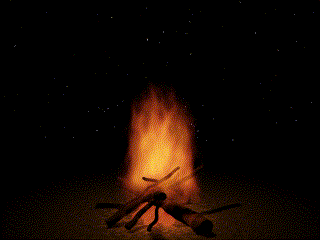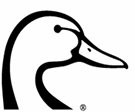Post by Fuzzy on Dec 3, 2007 15:28:09 GMT -5
For immediate release: Dec 03, 2007
Posted by: [DNR]
Contact: Marty Benson or Adam Phelps
Phone: 317) 233-3853, cell (317) 696-9812 or (812) 334-1137
Email: dnrnews@dnr.in.gov
Experimental February Canada goose season to be offered
The Indiana DNR has passed a temporary rule establishing an experimental 2008 February Canada goose hunting season in selected areas in an attempt to control the population of breeding Canada geese in and around urban areas of the state. Counties where geese can be hunted during that season, which runs Feb. 1-15, include Steuben, LaGrange, Elkhart, St. Joseph, La Porte, Starke, Marshall, Kosciusko, Noble, De Kalb, Allen, Whitley, Huntington, Wells, Adams, Boone, Hamilton, Madison, Hendricks, Marion, Hancock, Morgan, Johnson, Shelby, Vermillion, Parke, Vigo, Clay, Sullivan, and Greene.
According to Adam Phelps, Indiana DNR waterfowl biologist, populations of breeding Canada geese in Indiana appear to have leveled off during the past few years at about 125,000. The DNR's target population for reducing human-geese conflicts in urban areas is 80,000.
"We chose February because it's when geese are most likely to leave cities and towns," Phelps said. "Urban ponds are most likely to be frozen in February, and grass is most likely to be covered with snow.
"These two conditions may force urban geese into agricultural fields outside of town to feed, where it is usually safe and legal - in season - to hunt them."
Indiana has used a September season on locally breeding geese for many years. The new "late" season gives wildlife managers another tool to manage local goose populations, and gives waterfowl hunters more days afield.
The bag limit for the experimental season is five Canada geese per day, with a possession limit of 10, same as for the September season. Shooting hours are from a half-hour before sunrise to sunset.
The same regulations and restrictions that apply during the September season apply during the February season. In addition to a valid hunting license, signed Indiana waterfowl stamp (unless exempt), a federal duck stamp, and an HIP (Harvest Information Program) number, a free permit is also required. Free permits are available at (812) 334-3795, goosehuntingpermit@dnr.in.gov, or any state Fish and Wildlife Area, field office, or reservoir during regular January hours.
Hunters must check all geese harvested at a check station. Geese must have the head, a fully feathered wing, and reproductive parts still attached when the bird is checked. Check station staff will age and sex each bird, and will remove and keep the head of all adult birds checked. These heads are measured to determine whether each bird is a Canadian migrant or a local breeder.
This process is required by the U.S. Fish and Wildlife Service to determine whether more locally breeding geese are being harvested than Canadian-breeding ("migrant") geese.
Data collected during the season will be used to determine whether the late season will continue to occur in future years. Even if Indiana's season meets federal guidelines, the season may be closed in future years if local Canada goose populations are sufficiently reduced.
This temporary rule also establishes a one-year Feb. 1 to March 31 season for the lesser snow goose and Ross's goose. The HIP number and federal duck stamp are not required to take a lesser snow goose or a Ross's goose.
The DNR director has exclusive authority to adopt temporary rules regarding such issues. Such rules are valid for a maximum of one year and can be renewed by the director for an additional period not to exceed one year.
Link to this event: www.in.gov/newsroom.htm?detailContent=113_13115.htm
Posted by: [DNR]
Contact: Marty Benson or Adam Phelps
Phone: 317) 233-3853, cell (317) 696-9812 or (812) 334-1137
Email: dnrnews@dnr.in.gov
Experimental February Canada goose season to be offered
The Indiana DNR has passed a temporary rule establishing an experimental 2008 February Canada goose hunting season in selected areas in an attempt to control the population of breeding Canada geese in and around urban areas of the state. Counties where geese can be hunted during that season, which runs Feb. 1-15, include Steuben, LaGrange, Elkhart, St. Joseph, La Porte, Starke, Marshall, Kosciusko, Noble, De Kalb, Allen, Whitley, Huntington, Wells, Adams, Boone, Hamilton, Madison, Hendricks, Marion, Hancock, Morgan, Johnson, Shelby, Vermillion, Parke, Vigo, Clay, Sullivan, and Greene.
According to Adam Phelps, Indiana DNR waterfowl biologist, populations of breeding Canada geese in Indiana appear to have leveled off during the past few years at about 125,000. The DNR's target population for reducing human-geese conflicts in urban areas is 80,000.
"We chose February because it's when geese are most likely to leave cities and towns," Phelps said. "Urban ponds are most likely to be frozen in February, and grass is most likely to be covered with snow.
"These two conditions may force urban geese into agricultural fields outside of town to feed, where it is usually safe and legal - in season - to hunt them."
Indiana has used a September season on locally breeding geese for many years. The new "late" season gives wildlife managers another tool to manage local goose populations, and gives waterfowl hunters more days afield.
The bag limit for the experimental season is five Canada geese per day, with a possession limit of 10, same as for the September season. Shooting hours are from a half-hour before sunrise to sunset.
The same regulations and restrictions that apply during the September season apply during the February season. In addition to a valid hunting license, signed Indiana waterfowl stamp (unless exempt), a federal duck stamp, and an HIP (Harvest Information Program) number, a free permit is also required. Free permits are available at (812) 334-3795, goosehuntingpermit@dnr.in.gov, or any state Fish and Wildlife Area, field office, or reservoir during regular January hours.
Hunters must check all geese harvested at a check station. Geese must have the head, a fully feathered wing, and reproductive parts still attached when the bird is checked. Check station staff will age and sex each bird, and will remove and keep the head of all adult birds checked. These heads are measured to determine whether each bird is a Canadian migrant or a local breeder.
This process is required by the U.S. Fish and Wildlife Service to determine whether more locally breeding geese are being harvested than Canadian-breeding ("migrant") geese.
Data collected during the season will be used to determine whether the late season will continue to occur in future years. Even if Indiana's season meets federal guidelines, the season may be closed in future years if local Canada goose populations are sufficiently reduced.
This temporary rule also establishes a one-year Feb. 1 to March 31 season for the lesser snow goose and Ross's goose. The HIP number and federal duck stamp are not required to take a lesser snow goose or a Ross's goose.
The DNR director has exclusive authority to adopt temporary rules regarding such issues. Such rules are valid for a maximum of one year and can be renewed by the director for an additional period not to exceed one year.
Link to this event: www.in.gov/newsroom.htm?detailContent=113_13115.htm







 I don't know if there is a 48 hr. rule to check in or not? I know I will be out hunting them!!!! Should be a great time to hunt!!! Like stated, this is experimental and they NEED this info to help determine if they are going to do this in future years which is something that we all want!!!! So a little sacrifice this season to help insure this will be here in future years!!!
I don't know if there is a 48 hr. rule to check in or not? I know I will be out hunting them!!!! Should be a great time to hunt!!! Like stated, this is experimental and they NEED this info to help determine if they are going to do this in future years which is something that we all want!!!! So a little sacrifice this season to help insure this will be here in future years!!! 

